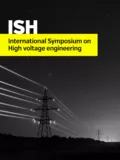Summary
Risk in GIS can be mitigated either by reducing the failure impact on the business values of the electricity company or by increasing the mean time between failures i.e. reducing the failure frequency or both. Reducing the failure impact on the business values can be achieved by increasing the GIS redundancy, for example, by using a double busbar system. Increasing the redundancy may increase the cost and the GIS complexity. Other ways to reduce the failure impact are for instance using better protection systems and emergency plans. On the other hand, diagnostic measurements could unveil upcoming failure modes. By preventive maintenance the mean time between failures increases and hence the failure frequency decreases. Therefore, performing diagnostics can be seen as a preparatory step in mitigating or reducing risk. the challenge is to select a cost-effective diagnostic technique out of the many available techniques, by omitting overlapping diagnostics for the same failure mode while sufficient detection ability is ensured. This selection procedure is to prioritize the different diagnostics by a priority number. In this way, it is possible to select the minimum required set of diagnostics which nevertheless reveal critical failure modes in GIS.
Additional informations
| Publication type | ISH Collection |
|---|---|
| Reference | ISH2017_311 |
| Publication year | |
| Publisher | ISH |
| File size | 725 KB |
| Pages number | 6 |
| Price for non member | Free |
| Price for member | Free |



